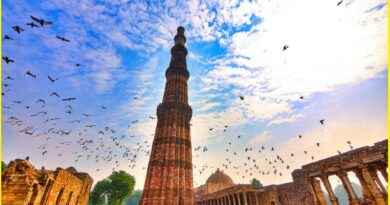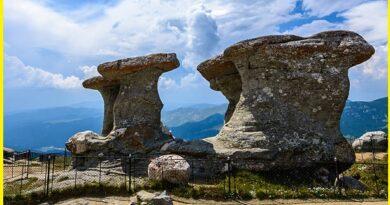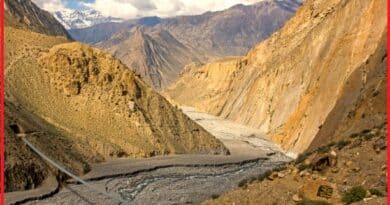Azure Majesty: Discovering Tsomgo Lake in Sikkim
Tsomgo Lake Sikkim
Tsomgo Lake, also known as Changu Lake, is a mesmerizing glacial lake situated in the East Sikkim district of the Indian state of Sikkim. Tsomgo Lake is located approximately 38 kilometers away from Gangtok, the capital city of Sikkim. It lies at an elevation of around 3,753 meters above sea level, amidst the rugged terrain of the Eastern Himalayas. Tsomgo Lake is renowned for its stunning natural beauty, surrounded by steep mountains and lush alpine forests. The lake reflects the sky’s changing colors, ranging from turquoise blue to emerald green, depending on the weather and time of day.
For the local Sikkimese people, Tsomgo Lake holds great religious significance. It is considered sacred and is revered as a holy site by both Buddhists and Hindus. Visitors can often witness prayer flags fluttering in the wind and small shrines dedicated to local deities near the lake.
Tsomgo Lake is accessible by road from Gangtok, with a journey of approximately 2 hours. Due to its high altitude and unpredictable weather conditions, the road to the lake is often steep and winding, so visitors are advised to hire experienced drivers or book organized tours for a safe and comfortable journey. The beauty of the Lake changes with the seasons. In winter, the lake freezes over, creating a stunning vista of snow-capped mountains reflected in the icy surface. During the spring and summer months, the surrounding hillsides come alive with blooming rhododendrons and other alpine flowers.
The weather at Tsomgo Lake, like much of the Himalayan region, can be quite variable and is influenced by factors such as altitude, season, and local weather patterns. Here’s an overview of the typical weather conditions at Tsomgo Lake throughout the year:
Spring (March to May)
Spring is one of the best times to visit Tsomgo Lake. The weather during this season is generally pleasant, with clear skies and mild temperatures. Daytime temperatures can range from 10°C to 15°C, making outdoor activities such as trekking and sightseeing comfortable. The surrounding hillsides come alive with colorful blooms of rhododendrons and other alpine flowers, adding to the scenic beauty of the lake.
Summer (June to August)
Summer in Tsomgo Lake experiences mild to moderately warm temperatures during the day, with cool nights. Daytime temperatures typically range from 10°C to 20°C, but they can drop significantly at night, especially at higher altitudes. The summer months also coincide with the monsoon season, bringing occasional rainfall and cloudy weather. It’s advisable to check weather forecasts and plan outdoor activities accordingly.
Also read- These are the Fabulous Tourist Attraction in Sikkim on a Tight Budget
Autumn (September to November)
Autumn is another favorable time to visit Tsomgo Lake. The weather remains pleasant, with clear skies and cool temperatures. Daytime temperatures gradually start to decrease towards the end of autumn, ranging from 5°C to 15°C. The foliage begins to change colors, creating a picturesque landscape with hues of red, yellow, and orange.
Winter (December to February)
Winter in Tsomgo Lake is cold and can be harsh, especially at the high altitude of the lake. Daytime temperatures can range from below freezing to around 10°C, while nighttime temperatures can drop well below freezing. The lake may freeze over completely during the winter months, creating a stunning vista of snow-covered mountains and icy landscapes. Heavy snowfall and icy roads can sometimes disrupt travel to the Lake during winter, so it’s essential to check road conditions and travel advisories before planning a visit.

Overall, the best time to visit the Lake is during the spring and autumn months when the weather is pleasant, and the scenery is at its most beautiful. However, visitors should be prepared for the possibility of changing weather conditions and pack accordingly for their trip.
2. Frozen Tsomgo Lake
Frozen Tsomgo Lake presents a captivating spectacle, especially during the winter months when the temperature drops significantly, causing the lake’s surface to freeze over completely. During the winter season, the Lake and its surrounding hillsides are blanketed in a layer of snow, creating a pristine and enchanting winter wonderland. The entire landscape takes on a surreal beauty, with snow-capped mountains and icy trails leading to the frozen lake.
The frozen surface of Tsomgo Lake transforms into a vast expanse of ice, reflecting the surrounding snow-covered peaks and the clear blue skies above. Visitors can walk on the frozen lake and marvel at its crystal-clear ice formations, which shimmer in the sunlight. Frozen Tsomgo Lake offers a serene atmosphere, with the only sounds being the soft crunch of snow underfoot and the occasional breeze rustling through the trees. The peaceful ambiance makes it an ideal destination for quiet contemplation and introspection amidst the beauty of nature.
3. Tsomgo Lake Ropeway
A cable car that climbs to 14,500 feet on the snow-covered slopes near Changu Lake is fast becoming a major tourist attraction to Sikkim. Built after an almost decade-long struggle, the Tsomgo Passenger Ropeway started operation in July 2017. In a short span of less than a year, the ropeway has become an added attraction for tourists visiting Tsomgo Lake, which over the years has become a tourism hotspot of the Himalayan state. Tsomgo is about 40 kilometers from Gangtok and 15 kilometers short of Nathula, the border pass between India and China, which has become a must-visit for tourists in Sikkim.
4. Gangtok to Tsomgo Lake
The journey from Gangtok to Tsomgo Lake is approximately 38 kilometers, and it takes around 2 hours by road, depending on traffic and weather conditions. You can hire a taxi or join a guided tour to travel from Gangtok to Tsomgo Lake. Taxis are readily available in Gangtok, and you can arrange for a round trip or a one-way journey to the lake. The route from Gangtok to the Lake passes through picturesque landscapes, including winding mountain roads, lush forests, and charming villages. Along the way, you’ll also encounter scenic viewpoints and small markets selling local handicrafts and snacks.
Before traveling to Lake, visitors need to obtain a permit from the Sikkim Tourism Department. The permit can be arranged through registered tour operators or hotels in Gangtok. Foreign nationals may also need to obtain a Protected Area Permit or Restricted Area Permit, depending on their nationality.



